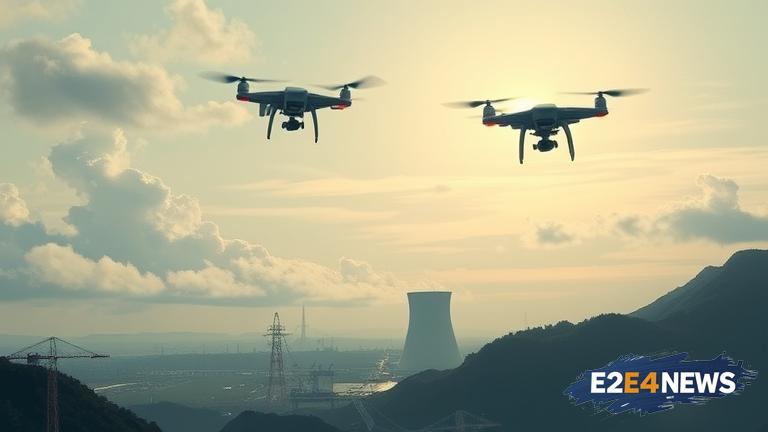In a disturbing incident, three unidentified unmanned aerial vehicles (UAVs) were detected entering the restricted airspace above a nuclear power plant in Japan. The breach of security has raised significant concerns about the potential risks and threats to the facility and its surroundings. According to reports, the drones were spotted on separate occasions, with the first incident occurring on a weekday morning. The UAVs were found to be flying at a relatively low altitude, which has prompted an investigation into the matter. The Japanese authorities have launched a probe to determine the origin and purpose of the drones, as well as to identify those responsible for the incident. The nuclear power plant, located in a rural area, has a strict no-fly zone in place to prevent any unauthorized aerial activities. The incident has sparked fears about the potential for malicious activities, such as sabotage or espionage, and has highlighted the need for enhanced security measures. The Japanese government has assured the public that the facility is safe and that there is no immediate threat to the environment or human health. However, the incident has raised questions about the effectiveness of the current security protocols and the ability of the authorities to respond to such incidents. The use of drones has become increasingly common in recent years, and their potential for malicious use has become a growing concern. The incident has also sparked a debate about the need for stricter regulations and laws to govern the use of drones in Japan. The country has been at the forefront of technological advancements, and the use of drones has been widely adopted in various industries, including construction, agriculture, and entertainment. However, the incident has highlighted the need for a more robust framework to regulate the use of drones and to prevent such incidents in the future. The Japanese authorities have appealed to the public for any information that may lead to the identification of those responsible for the incident. The investigation is ongoing, and the authorities are working to determine the motives behind the incident. The incident has also raised concerns about the potential for similar incidents at other critical infrastructure facilities, such as airports and government buildings. The Japanese government has assured the public that it is taking all necessary measures to prevent such incidents and to ensure the safety and security of its citizens. The incident has sparked a wider debate about the need for enhanced security measures and the importance of protecting critical infrastructure from potential threats. The use of drones has the potential to be a powerful tool for malicious activities, and the incident has highlighted the need for a more proactive approach to preventing such incidents. The Japanese authorities are working closely with international partners to share intelligence and best practices in preventing and responding to such incidents. The incident has also raised questions about the potential for cyber threats and the need for enhanced cybersecurity measures to protect critical infrastructure. The Japanese government has assured the public that it is taking all necessary measures to prevent such incidents and to ensure the safety and security of its citizens. The incident is a reminder of the importance of vigilance and the need for a proactive approach to preventing and responding to potential threats. The investigation is ongoing, and the authorities are working to determine the motives behind the incident and to identify those responsible.
